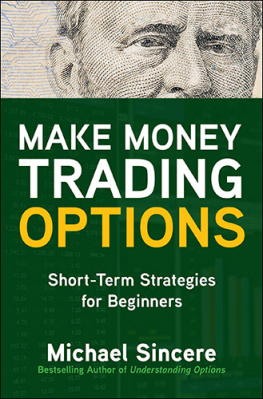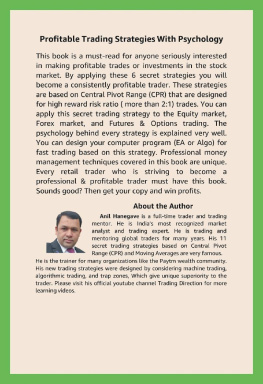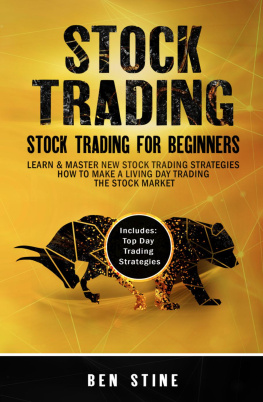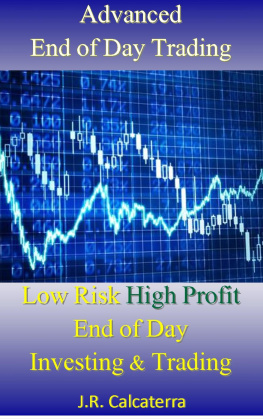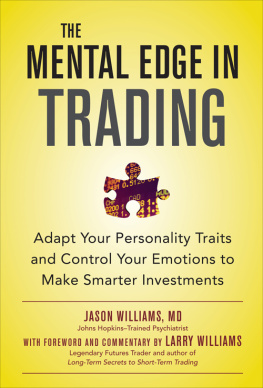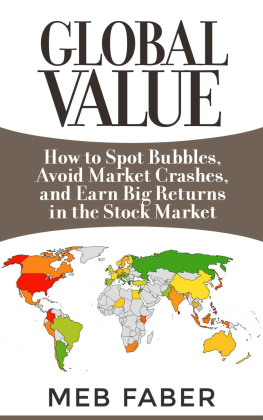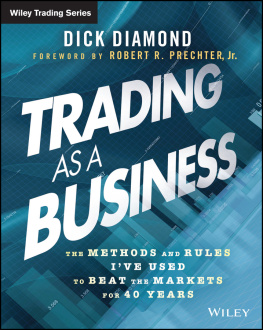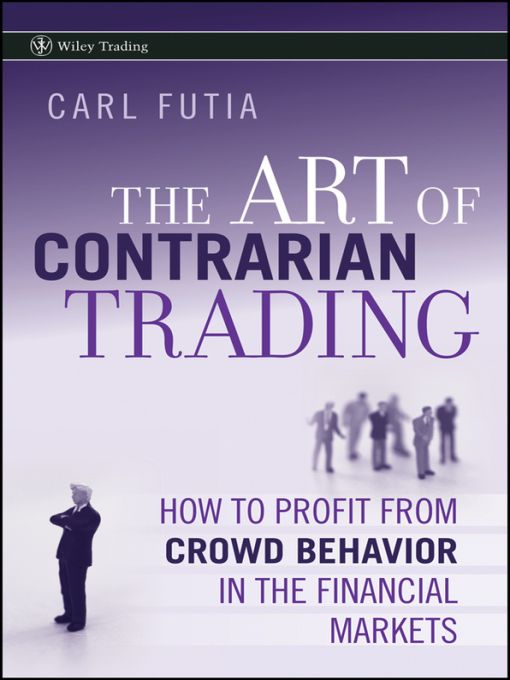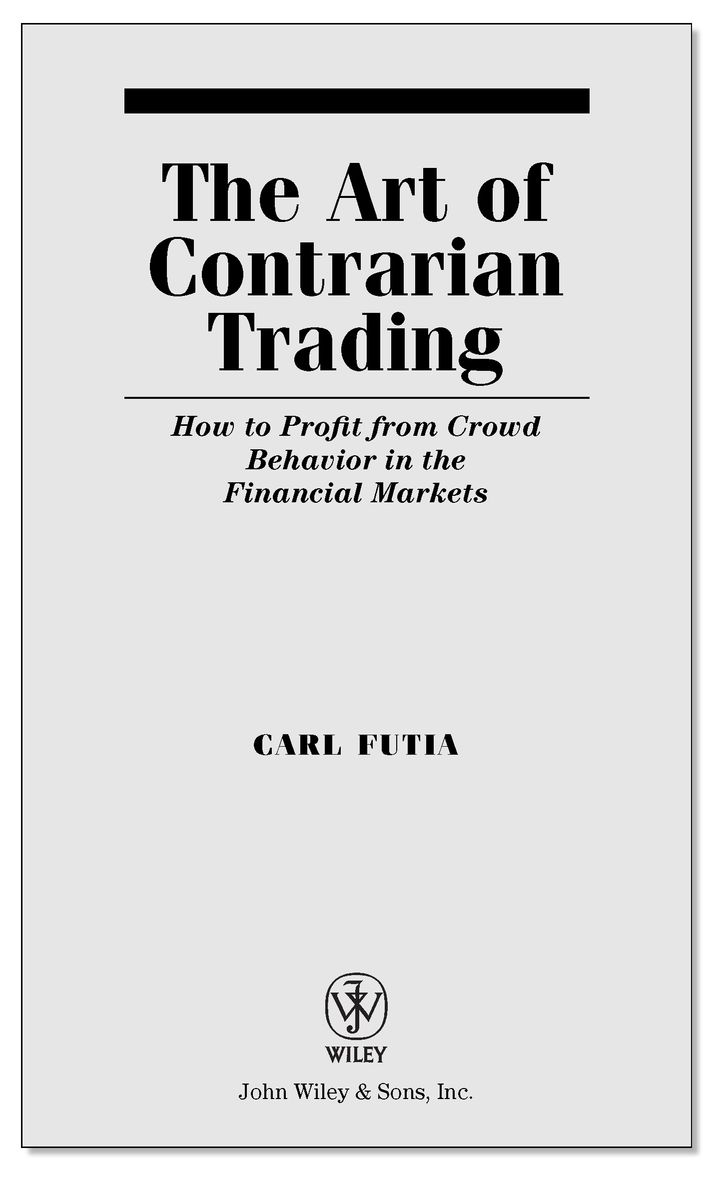Table of Contents
Founded in 1807, John Wiley & Sons is the oldest independent publishing company in the United States. With offices in North America, Europe, Australia, and Asia, Wiley is globally committed to developing and marketing print and electronic products and services for our customers professional and personal knowledge and understanding.
The Wiley Trading series features books by traders who have survived the markets ever changing temperament and have prosperedsome by reinventing systems, others by getting back to basics. Whether a novice trader, professional, or somewhere in-between, these books will provide the advice and strategies needed to prosper today and well into the future.
For a list of available titles, visit our Web site at www.WileyFinance.com.
Preface
Why is it so difficult to beat the stock market? It is easy to see that the market gives us plenty of chances to buy low and sell high. Just look at the history of the past 10 years, 1998 to 2008. During that time the Standard & Poors (S&P) 500 index has fluctuated between 752 and 1,565. There have been five distinct, substantial swings across this range. The brief panic in 1998 arising from the Russian credit default and the failure of a big hedge fund, Long Term Capital Management, dropped the S&P nearly 20 percent, from 1,187 to 957. Those fears quickly evaporated, and the subsequent climb in prices capped a stock market bubble that was unprecedented in the financial history of the United States. The S&P rose to a high of 1,527 in March 2000, an advance of nearly 1,400 percent from its 1982 low of 102.
The biggest thrills of this stock market roller-coaster ride were yet to come. The S&P dropped nearly 50 percent during the following two years. At the indexs October 2002 low of 777, investors gasped at the shocking collapse of the Internet stocks and feared that corporate accounting statements were meaningless. But the downward rush in stock prices during the preceding two years seemed to generate just the momentum needed to push the market back up to the top of its next hill. During the subsequent five years the S&P more than doubled to a closing high in October 2007 of 1,565.
As the stock market began to edge downward from its 2007 peak, no one could imagine the terrors that lay ahead. Within a year the panic of 2008 had destroyed financial institutions around the world. The rest teetered on the edge of collapse. On November 20, 2008, the S&P closed at 752 after careening downward 52 percent from its high a year earlier. Many people feared that even worse was to come.
In this book I tell you why it is so difficult for the average investor to profit from these roller-coaster swings in stock prices. I explain why it is almost impossible to consistently buy low and sell high and thus do better than the benchmark strategy of the buy-and-hold investor. Along the way I hope to help you make an informed choice of your personal investment strategy.
You may decide that attempting to beat the market is not really a good choice for you. The emotional strain involved may just not be worth the effort. Self-knowledge like this is invaluable, worth far more than the price of this book.
Or you may choose to learn the art of contrarian trading. If so, I think you have chosen a difficult path, but I also think you have in your hands the only book in print that can help you achieve this goal.
I am a contrarian trader. I have learned my art the hard way, by making plenty of mistakes, by unknowingly becoming part of the crowd at the wrong time. You see, the reason stock prices move up and down so much is that we all like to join crowds, social groups of like-minded people. When such crowds form around investing themes in the stock market, they push stock prices too high or too low relative to fair value. Why? Crowds suppress the dissenting views of nonmembers and amplify the consensus views of their members. Crowd members act together, not independently, and when this happens the market price strays substantially from fair value.
Economic experts believe that stock prices are much more variable than warranted by fluctuations in corporate profits and dividends. I think that the constant formation and disintegration of investment crowds is responsible for this excessive variability and for the wide range over which stock prices tend to fluctuate.
Another way of putting this is to say that investment crowds are responsible for the pricing mistakes made by Mr. Market. Mr. Market is the subject of an investment parable told by the father of value investing, Benjamin Graham. Mr. Market is at your elbow each day telling you what he thinks your investment portfolio is worth. Many days his estimate seems plausible and justified by business conditions. On many other days Mr. Market lets his enthusiasm or fears run away with him, and the value he proposes seems little short of silly. Investment crowds are responsible for Mr. Markets periodic bouts of enthusiasm or fear.
If investment crowds are responsible for the pricing mistakes made by the stock market, then it logically follows that you can do better than a buy-and-hold investor if you can detect those situations in which an investment crowd has driven a stock or the entire market too high or too low relative to fair value. The method for doing this that I propose in this book rests on a simple observation.
Crowds develop and grow during a communication process called an information cascade. During an information cascade the print and electronic media focus public attention on recent, dramatic movements in markets and the associated profits and losses of investors. This in turn encourages people to put aside their natural skepticism and adopt the investment theme the media are highlighting. As the investment crowd thus grows larger, it pushes the market even further away from fair value and toward a substantial valuation mistake.
I think a contrarian trader can learn to take advantage of Mr. Markets periodic bouts of enthusiasm and fear by tracking information cascades in the media. I will show you how to do this by keeping a media diary. In the final third of this book Ill illustrate the use of the contrarian traders media diary during the turbulent years beginning with the 1987 crash and continuing through the panic of 2008.
I warn you that the journey toward becoming a contrarian trader will be a difficult one with an uncertain end. Most people are simply not cut out to be contrarian traders, for they love the companionship and approval of their fellow investors too much. But if you are prepared to step away from the crowd, to make wise investment choices that the crowd will think silly or ill-advised, then this book is for you. You may also want to follow my contrarian trading views in real time. For these you can look to my blog, which currently can be found at www.carlfutia.blogspot.com.
Each of the following 16 chapters begins with a brief outline of its content. Here I want only to give you a general picture of this books structure and the way in which it explains the process of contrarian trading.
Chapters 1 to 5 develop the foundation on which our method will rest. We answer the question of why some speculators win but most lose, and in so doing we identify the successful speculators characteristic edge. We will see why investment crowds are responsible for market mistakes and discuss the characteristic behavior of such crowds.


